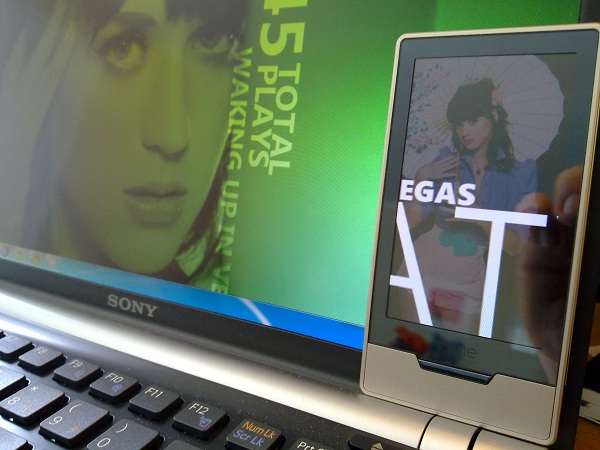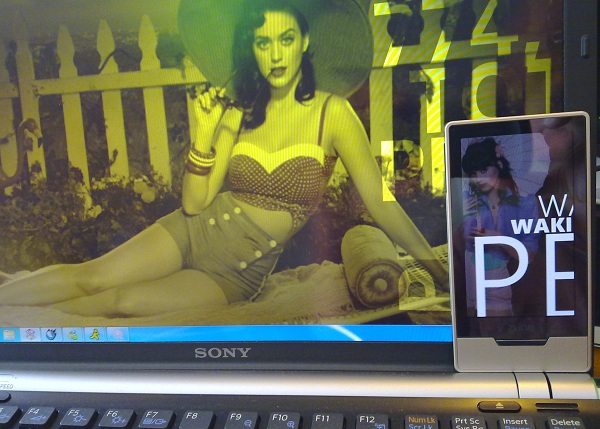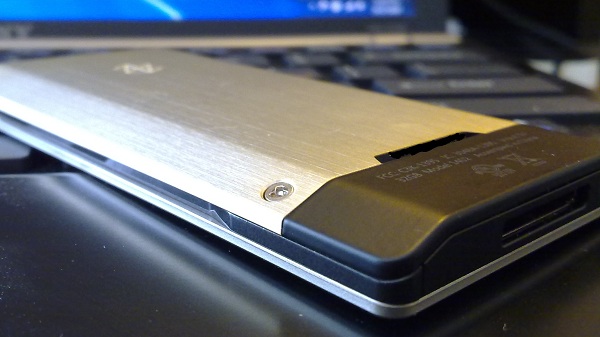Zune HD: The best portable media player you may never buy
On Friday, I bought a Zune HD 32, so that you wouldn't have to.
On Monday, I may return it.
The Zune HD is perhaps the best portable media player released by any vendor -- even better than iPod touch. Microsoft finally gamed Apple, with better design, better hardware components, more appropriate size and outstanding digital content consumption experience.
But Zune HD also is a platform without a purpose. It's a single device in a multipurpose world. There isn't much you can do with Zune HD other than watch movies or listen to music, and there is currently no ecosystem for extending Zune HD's utility -- nor is one visible in the distance. Zune HD is a real heart breaker, because Microsoft otherwise has delivered something exceptional.
Before proceeding a qualification: Unlike many other product reviewers, I'm decidedly pragmatic. I strip away the hardware speeds and feeds, refuse to benchmark and focus on the down and dirty of usability. I ask at the start: Can you easily use the product and eke some enjoyment from it? Related: How well will the product fit into digital lifestyles? Many other reviewers have glowed over Zune HD. Much as my geek nature likes the device, my pragmatic character finds faults. These faults can only really be fixed by what Microsoft does really well: Partnering. Without partners, Zune HD is little more than prototype for a Microsoft phone, which this device absolutely should have been.
A Thing of Beauty, Flawed
Zune HD is a classy device. The portable media player is finely crafted, is remarkably thin and fits more comfortably in the hand than iPod touch (Zune HD measure 52.7 mm x 102.1 mm x 8.9 mm and weighs 74 grams). If Microsoft combined iPod nano with iPod touch and sprinkled in its design DNA, Zune HD would be the progeny. The device is what the 5th generation Apple's iPod nano should have been: Slightly larger to accommodate a touch screen. For size, shape, weight and feel in the hand, Zune HD is simply the best portable media player I have ever held.
The Zune HD's size, particularly its thinness, would be ideal for a cell phone -- way better suited than iPhone. With a 3G radio, Bluetooth and application store, Zune HD could be a helluva phone. The task-oriented user interface, while very non-phone like, is ideally suited for a multi-functional device, even one with 3G telephony. Task-oriented UIs emphasize simplicity and hide complexity, increasing usability.

The device would be even better for handheld gaming, and there the Zune HD packs the hardware to deliver but not the entertainment applications and games to support it. The iPod touch is rapidly becoming the handheld game console of choice. Nintendo and Sony are on the defensive, as Apple extends a rich hardware and software gaming platform. Betanews' Tim Conneally reported on Sept. 15, 2009, that App Store has more than 21,000 gaming and entertainment apps compared to about 600 for Sony's PSP and about 3,700 for Nintendo DS.
Nearly 70 of the top 100 paid applications at Apple's App Store are games. By comparison, the Zune Marketplace offers nine Zune HD applications, seven of which are games. Nine might as well be zero when App Store offers 65,000+ applications. That said, the right seven could be enough if one of them was like any of the Halo series games for Xbox 360. But there is no killer app or game in the collection.
It's simply unconscionable -- or worse, incompetence -- that Microsoft, the developer of Xbox 360, launched Zune HD without a marketplace of games. What? Microsoft has no arcade games that it could port from Xbox 360 to Zune HD? I understand that Microsoft plans some kind of Xbox Live support for Zune HD, but it's already too little too late. There should have been big games from Day 1. Any later is too late.
Perhaps Microsoft isn't rushed because Zune HD is currently confined to US distribution. That's yet another logistical blunder. Microsoft should have launched Zune HD in at least five countries -- Australia, Canada, New Zealand, United Kingdom and United States. These are all English-speaking nations. Aside from some-fine tuning for localized English, Zune HD could be distributed fairly easily through Microsoft's existing retail channels. By confining Zune HD to United States, the otherwise internationally-focused Microsoft confines the device to failure. Apple sells iPod touch everywhere Zune HD isn't.
Taking the UI, Features to Task
OK, that's enough strategy analysis. What is Zune HD like to use? The OLED touchscreen is beautiful, and it's responsive. Like iPhone or iPod touch, Zune HD's touchscreen is capacitive, which responds to the fingers' electrical impulses. By comparison, my Nokia N97 cell phone uses a resistive touchscreen, which requires some pressure from the finger.
Zune HD's user interface should be familiar to the few million people who purchased its predecessors, alibiet optimized for touch. Flick of the finger scrolls the Zune HD menu, and there is multitouch manipulation, too. The Zune HD UI inherits some aspects from Zune 4.0 software, such as Quickplay to which users can pin music.

But the UI works well for something else: The visuals, supported by nVidia's Tegra APX 2600 chip, are exceptional. Apple iPod designers should bow in shame. Artist splash graphics, videos, games -- anything visual -- just delights the eyes. There is eye candy and then there is Zune HD. To reiterate: Microsoft engineers just slapped their Apple counterparts across the face. The Apple group should be ashamed for it. Did I mention that Zune HD is fast, too?
Content synchronization is simply excellent. Sync is another kind of user interface, and one Apple perfected with the first couple of iTunes/iPod generations but later ruined. The first iPod was plug in and sync. But as iTunes has grown fat so has sync become complicated with settings and switches -- forklifts to haul the music players' fat ass off the couch. Zune 4.0 software and Zune HD hardware bring back some of that joyous sync simplicity.
For music, I only synced tracks downloaded using Zune pass. The content was DRM-protected Windows Media Audio at 192kbps bitrate. Zune HD delivers great audio fidelity, even from these compressed tracks. There's an excellent graphic equalizer, which raises yet again the question why Zune 4.0 software has none. I find that Microsoft's 192kbps WMA sounds noticably better than Apple's 256kbps AAC. Apple does something in the encoding that boosts the bass, and in my experience AAC clips the highs. As such, AAC tracks sound muddy compared to WMA.
Similarly, Digital radio delivers great audio, too. I listened to San Diego's KGB, that's 101.5 FM, which broadcasts two HD channels. Switching between the two HD channels is easy as tapping the screen. Zune HD shows the playing artist and song title, and there is a cart icon for grabbing the music on the go. Using the media player's WiFi, I easily downloaded two tracks from Marketplace to Zune HD, which automatically synced them to my laptop when plugged in via USB cable. Because I have a Zune Pass subscription, there was no other charge for the music. How slick is that? This feature and others highlighted in my Zune 4.0 software review put music discovery on steroids. If you're looking to find new music, Microsoft will get you the goods better than Apple.
Zune Pass is one of the top reasons to buy the HD over touch. The 16GB Zune HD sells for $219.99 and the 32GB model for $289.99. The 8GB iPod touch sells for $199 and the 32GB model for $299. For about $20 more then touch entry model, portable media player buyers can double their storage capacity with Zune HD 16. But the bigger value difference comes with Zune Pass, which on paper costs $14.95/month for unlimited download access to most of the Zune Marketplace music catalog. But Microsoft gives subscribers 10 MP3 song purchases per month for free, effectively reducing monthly cost to around 5 bucks. That's helluva value compared to iTunes albums, which increasingly cost more than $10 for new music. The hottest singles are $1.29 each. Do the math from the base price: How much would you otherwise spend per month on music for that iPod touch? Torrent freaks, why steal when you can have unlimited downloads for 5 bucks a month?
A Misguided Approach
For my video test, I downloaded HD version of free "An NBC Sneak Peak: Heroes," which looked fabulous, presumably because of the OLED display. But it wasn't exceptionally better than viewing the same video on my Nokia N97 or iPod touch. Those devices deliver a viewing experience that is good enough, even though not better. By the way, better is subjective to the user and relative to screen size and resolution, which is different for all three devices. For Zune HD: 3.3-inches; 480 x 272. iPod touch: 3.5 inches; 480 x 320. N97: 3.5 inches; 640 x 360.
The HD punch comes from outputting the video to a HDTV or HD monitor. Resolution: 720p. But that process requires one of two Zune HD AV kits, priced at either $39.99 or $89.99. That's a whole lot more to pay for the privilege of watching 720p content on the big screen. I didn't have either kit to test this feature, which I view as being misguided.

Yes, it's terribly misguided, and if you don't agree that's what comments are for. Please have your say. The AV output asks too much of most consumers. For starters, they have to buy the extra kit to get the 720p HD benefit. Additionally, it's an unnecessarily cumbersome approach to connect wires in an increasingly wireless world. Sure, a Zune HD user could set up the AV docked and leave it plugged into the TV all the time. That would reduce initial complexity to docking the device and fiddling with separate remotes. But it shouldn't be necessary, especially from a Microsoft that has put media sharing and streaming capabilities into Windows and Xbox 360. More importantly, it's a niche capability most mainstream users wouldn't want.
Since I'm harping on the misguided, there is Zune HD's Web browser to call out. Microsoft would have done better to ship no browser than the lame Internet Explorer piece of doggy doo stinking up Zune HD. It's a disappointment by many measures, starting with usability. It's a decidedly mobile browser (e.g., pages typically render differently in the browser than they would on a desktop version or Apple's WebKit-based mobile Safari; in search, user can choose between some mobile and non-mobile destinations).
Bing is the main user interface, and I don't have much to quibble about the basic approach. For years I've said that search is the new user interface, or should be for PCs and mobile devices. But search UI as a concept doesn't necessarily translate into excellent execution. I found getting around the Web to be somewhat frustrating, which takes points away from the overall good user experience. If people feel good about the product, for godsake don't give them any reasons to feel bad. The search UI is great, but the browsing engine beneath stinks.
Since Zune HD is a portable media player, I made YouTube my first browser destination. The page rendered just fine, but not the content, Microsoft's lame-ass browser doesn't support Flash. That would be OK if Microsoft imitated Apple and offered some other utility for watching those videos. By comparison, I can watch YouTube videos in the browser that shipped with my Nokia N97 cell phone.
Microsoft, what the hell are you doing here? What good is a portable media player that doesn't support one of the major distributors of portable media? That means no Hulu, either. What about Silverlight support? Will it come, perhaps? Dream on, baby. Dream on.
For its few flaws, Zune HD is a great portable media player, even if standing alone in a solitary ecosystem. Apple's mobile ecosystem is closed, too, but plenty more open and inviting to developers. I highly recommend Zune HD -- don't buy the iPod touch, bud. But I may not keep mine because it duplicates nearly all the functions on my Nokia N97 smartphone. Whoa, surprise: Nokia supports Microsoft's DRM technologies, which means Zune Pass content plays on the N97. Nice! I sync using Nokia's Ovi Suite 2.0.
Alas, as this post's title asserts: Zune HD is the best portable media player you may never buy, because:
- Most people will chose iPod touch. Apple's marketing is better and there is a huge stock of mobile applications.
- Zune HD's US-only distribution cuts it off from the world. What good is a device reviewers rave about that most nobody can buy?
- There is no content, particularly games. Portable media players have matured into new entertainment categories Zune HD misses.
- Xbox 360 and Zune HD aren't two peas in a pod, as they say. There's no real integration. They're more like two peas in the same field.
Tomorrow I will decide whether or not to keep my Zune HD 32. I do really like the device, and you would, too -- if Microsoft distributed it in your country. I say that for Betanews' many non-US readers, who deserve better. Doesn't everyone deserve better than iPod touch?
[Photo Credits: Joe Wilcox, using Nokia N97 smartphone.]